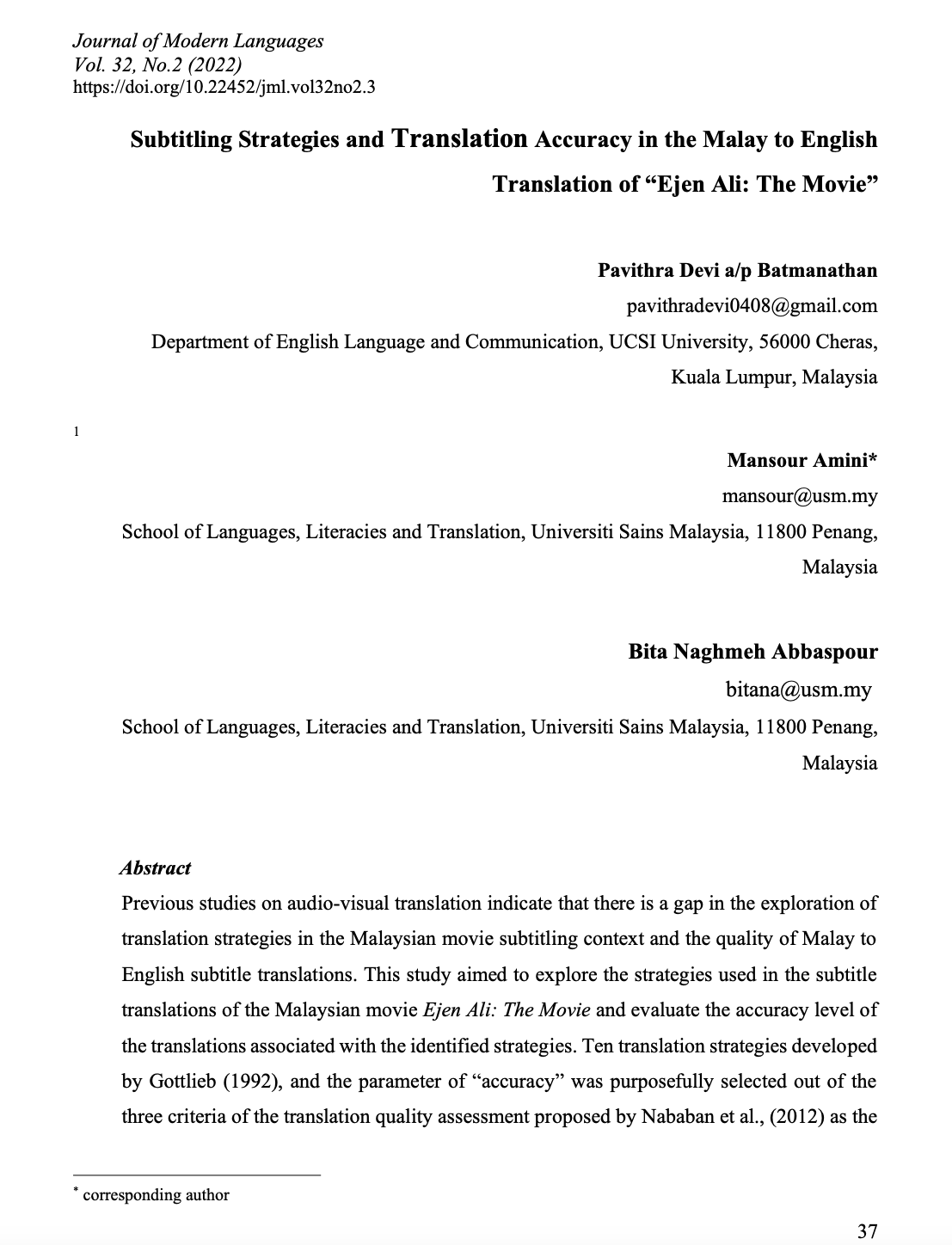Subtitling Strategies and Translation Accuracy in the Malay to English Translation of “Ejen Ali: The Movie”
Main Article Content
Abstract
Previous studies on audio-visual translation indicate that there is a gap in the exploration of translation strategies in the Malaysian movie subtitling context and the quality of Malay to English subtitle translations. This study aimed to explore the strategies used in the subtitle translations of the Malaysian movie Ejen Ali: The Movie and evaluate the accuracy level of the translations associated with the identified strategies. Ten translation strategies developed by Gottlieb (1992), and the parameter of “accuracy” was purposefully selected out of the three criteria of the translation quality assessment proposed by Nababan et al., (2012) as the theoretical framework of this study. The three main strategies used in the most accurate translations were “transfer”, “paraphrase”, and “expansion”. The subtitling of this movie was generally found accurate. In most of the accurate translations “transfer” strategy was utilized, whereas “dislocation” was identified in most of the inaccurate translations. Moreover, the findings revealed that there were inaccuracies in the translations which could have been avoided by using other relevant strategies. Gottlieb’s nine of 10 strategies (except transcription) in addition to the nine mixed strategies were identified and described in the process of analysis.

